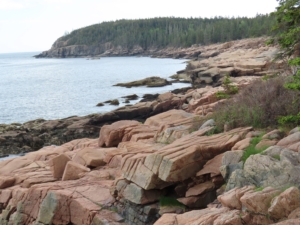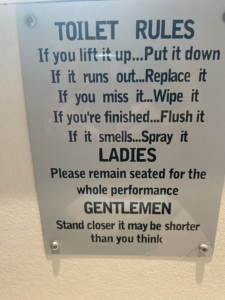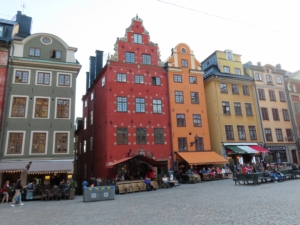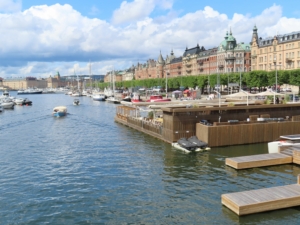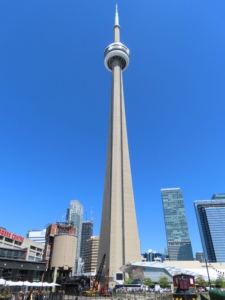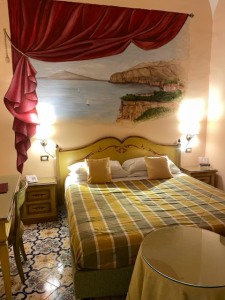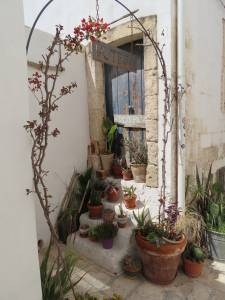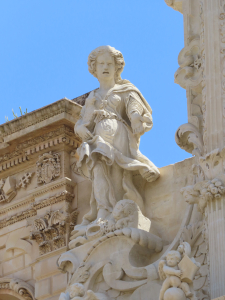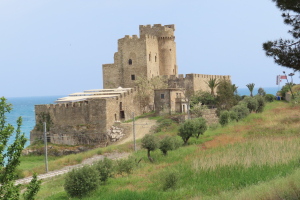
An abandoned castle on the side of the road in Apulia.
In Part 3, we traversed the crooked, uneven narrow roads of Matera’s Sassi area, finding a history steeped in ancient religions, superstitions, and a reluctance even now to live comfortably under the watchful eye of UNESCO and tourism.
Once again, Italy’s unfinished road system causes our bus driver to weave a meandering path along main highways and back roads towards our next destination, the Apulia (or Puglia) region, which forms the heel of Italy’s boot shape. Apulia, which means “land without rain” has a population of about four million. The economy is based on industry and agriculture, with tomatoes the chief moneymaker. Want the best mozzarella and burrata cheeses? Come to Apulia. The region is home to Bari, a port and university town, Lecce (known as the (“Florence of the South”), and Alberobello, home to another type of unique architecture that is a far cry from Matera’s Sassi caves.
